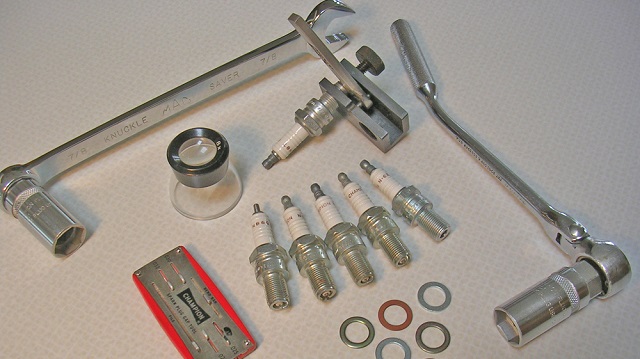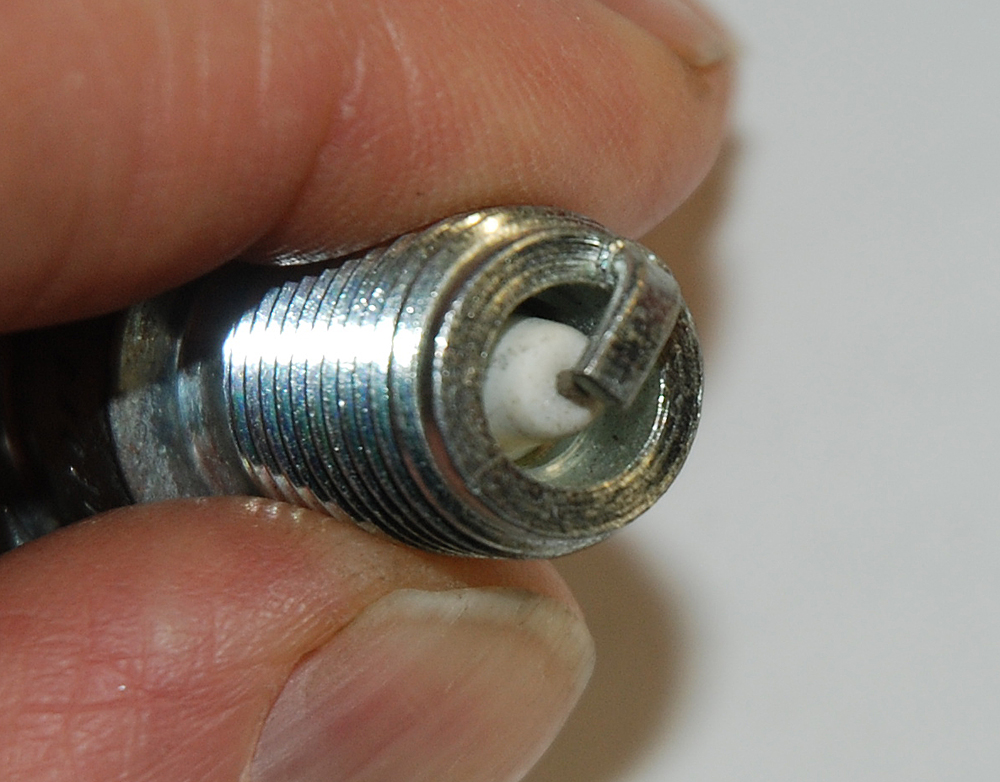
When we last left, we talked about how a high powered ignition system can alter the way you read plugs. There are ways around it, but first, do yourself a favor and try this:
Pick up a copy of a spark plug tuning guide (all of the major plug manufacturers offer a high-performance pocket tuning guide booklet). Examine the correct color and appearance of your spark plugs and compare them to the guide. This should give you some insight into things like detonation, overheating, coloration and the like. Our “Fire In The Hole” article series is not intended to replace the spark plug manufacturer’s guide — but rather to supplement it.

There are several different methods to prepare for reading spark plugs, but in the case of a modified engine, there is only one right way to accomplish it. The engine must be shut off “clean”. By this, you should accelerate the car for approximately 1/8 mile and click off the engine, allowing the car to coast to a stop at a safe location. The idea is to remove the plugs and inspect them. Obviously, this type of clean shut off will be easier with manual transmission cars than it is with automatics.

When it “fires”, the spark plug insulator transfers heat from the tip to the threads. If you look closely at a spark plug, you’ll see the point of effective heat transfer, which generates a ring on the spark plug insulator nose. The ring almost looks like a shadow and is more easily observed with a spark plug inspection light. The ring will form very quickly and is an indication of burning in the combustion chamber. The closer to the tip the ring forms, the richer the fuel mixture. The closer to the spark plug shell, the leaner the mixture. If there is no ring and the spark plug insulator tip is bone white, the fuel mixture is too lean (this information only applies to gasoline-fueled applications). The total range from rich to lean (ring near the tip to ring near the shell) may only take a change of seven to ten percent in the air-fuel mixture.

When making the switch to a high powered ignition system, you may find that the actual fuel curve will have to be enriched by five to ten percent — the reason being that the ignition system is now burning more efficiently. In addition, the total spark timing might have to be reduced by approximately three degrees.
As you might have guessed, reading the spark plugs isn’t exactly a black art, but it isn’t an exact science either. You have a number of variables open to you — air fuel mixture, spark plug heat range, ignition timing, fuel type and a host of other things that are not in your control (ambient temperature, barometric readings, etc.). The idea is to make the most of your situation, and tune from there.
Next issue, we’ll discuss gaps and plug indexing. Stay tuned:



Leave a Reply